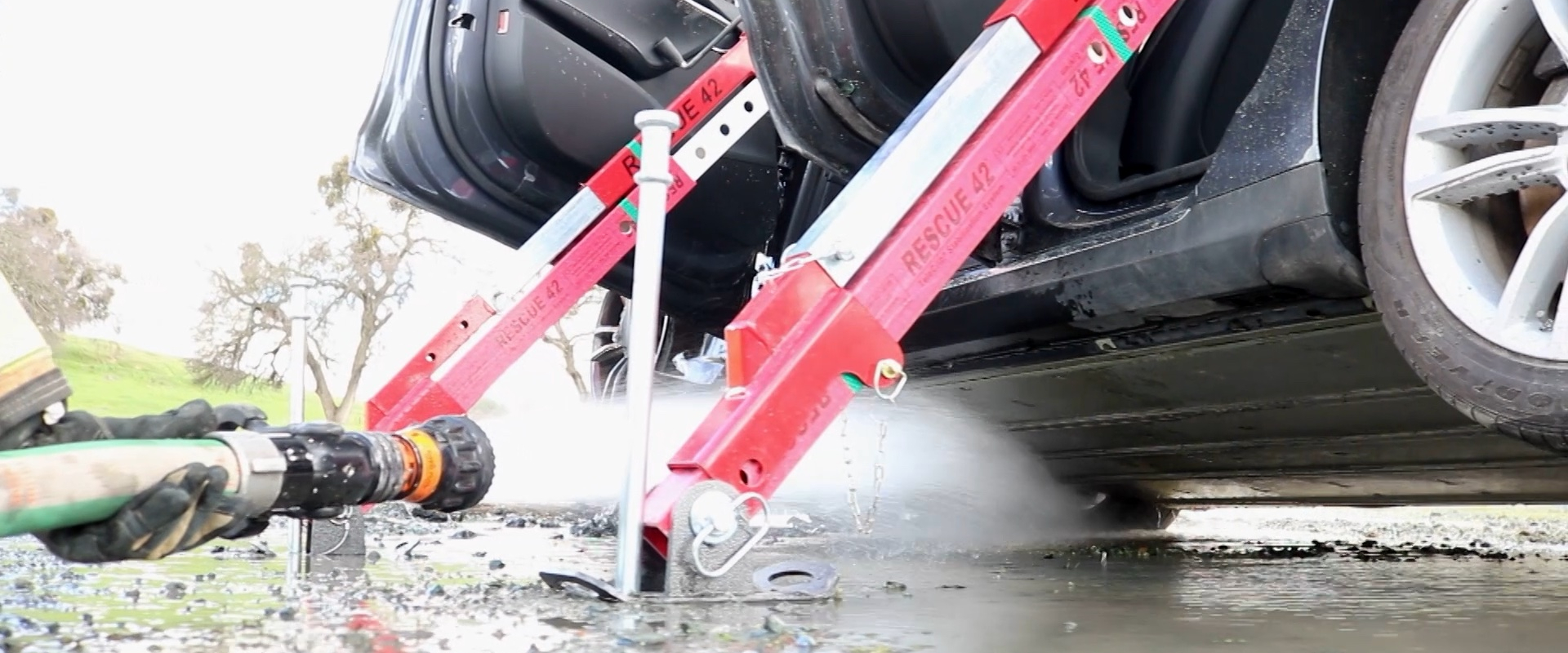How Common are Electric Vehicle Fires? Not Very
August 15, 2024Despite the headlines and horror stories, recent findings suggest that the likelihood of battery-electric vehicles catching fire is actually less than those of traditional gasoline-powered vehicles; though, their severity is not to be underestimated, nor is the need for proper training to deal with them.
A study conducted by AutoinsuranceEZ, using data pulled from the National Transportation Safety Board and sales data from the Bureau of Transportation Statistics, shows an interesting statistic. As compiled by goodcarbadcar.net, hybrid vehicles have the greatest likelihood of catching fire at 3,474.5 incidents per 100,000 sales, followed by gas-powered cars at 1,529.9 incidents and, in third, electric vehicles at 25.1 incidents.
Looking at information collected from the NFPA and U.S. Department of Transportation, a vehicle fire occurs, on average, for every 18 million miles traveled. Compare that to Tesla models, in 2022, where one fire event was reported every 130 million miles driven.
To create a clearer picture, look at the world’s leader in electric vehicle adoption: Norway. Their Directorate for Social Security and Emergency Preparedness found that ICE vehicles are four to five times more likely to suffer an incident. Crossing the border for data pulled from the Swedish Civil Contingencies Agency, 3.8 fires per 100,000 electric or hybrid vehicles compared to 68 per 100,000 ICE vehicles. Findings published from a separate study, conducted by Australia’s Department of Defence, shows a 0.0012% likelihood of battery-electrics catching fire, while ICE cars showed a 0.1%.
This is, to be fair, partially attributed to the relatively recent adoption of electric vehicles. On top of that, it is true that EV-related fires can pose special risks, due to being harder to put out and requiring specialized training to deal with, as we learned firsthand with the National Fire Protection Association. Fires caused from compromised batteries can last a long time due to thermal runaway and even reignite after being put out. In some instances, as reported by the Wall Street Journal, firefighters and other first responders see fit to let the fire burn until distinguishing itself. There are other concerns, too, like the toxic fumes and cleanup efforts. Due to the nature of these fires, and their severity and difficulty to address without the proper resources, they’re more likely to be highlighted on the news.
The miniscule 0.1% chance of a fire incident shouldn’t scare you from purchasing an ICE vehicle, of course, but the even smaller chance of an EV igniting shouldn’t scare you either.







